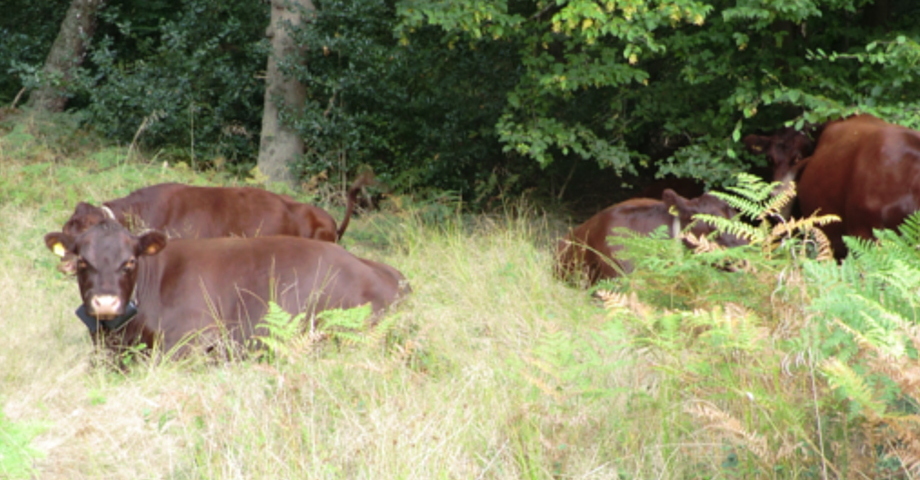
Wood Pasture and Parkland in the UK
Description of system
In the UK, High Natural and Cultural Value (HNCV) agroforestry has been interpreted as Wood Pasture and Parkland systems. The UK has a rich history of grazed common lands and more formal parklands. These systems can be broadly characterised as large open-grown (often veteran or ancient) trees, set amongst pasture grazed by cattle. These systems can be many centuries old, and often contain a very specialist flora and fauna of great conservation value.
If you would like to know about the activity of this group, please contact Paul Burgess at Cranfield University
Initial stakeholder meeting
The 'Wood Pastures and Parkland in the UK' group had its first meeting on the 23 September 2014 at Epping Forest visitor centre, an historic common where cattle have been grazed beneath managed trees for 800 years.
The initial group consisted predominantly of policy makers and stakeholders with an interest in Wood Pasture and Parkland systems from a conservation viewpoint, further meetings are planned to increase representation with farmers and practitioners.
This meeting identified (amongst other things) a need to increase understanding of Wood Pasture and Parkland systems among all sectors in the UK, and to address the image of these systems. A key potential innovation to come out of this meeting was the use of 'invisible fencing' which is being pioneered by Dr. Jeremy Dagley of Epping Forest. See below for a video of Jeremy explaining the system.
Download the initial stakeholder report
Download the initial research and development protocol
A research and development protocol was produced in April 2015
Download the system description
A system description and research on the sustainability of the tree population within Epping Forest (before and after restoration) was produced in January 2016.
Epping Forest has produced the following video decsribing how invisible fencing systems can be used for cattle grazing on public open access sites and commons.
Lessons learnt
In July 2017, staff at Cranfield University summarised the lessons learnt with the UK stakeholder group focused on wood pastures and parklands in the UK. The research focused on i) wood pasture restoration including the use of a management tool, ii) an assessment of the economics of ”invisible fencing” and iii) an assessment of the effect on soil carbon of new wood pasture establishment on grassland.
The study of wood pasture restoration showed that the greatest number of plant species was found in the restored ancient wood pasture i.e. the restoration which involved pollarding and opening up the woodland was successful in achieving its biodiversity objective. The study also showed that it was possible to use the “Kirby” model to make predictions regarding the future age distributions of different tree species.
The economic analysis suggested that the cost of single loop invisible fencing covering about 25 ha is about 44% greater than with a wooden fence over a 30 year period. Hence the invisible fencing system is likely to be restricted to situations where unhindered access for the general public is valued highly.
Lastly in a study on a wood pasture (reported by Upson et al. 2016) established in England on grassland 14 years ago, the organic carbon content in the top 10 cm was reduced by 10% in the silvopastoral tree plots, and 22% in a conventional woodland, compared to the pasture without trees. Although the greatest total carbon storage (including above ground carbon) occurred in the woodland, the carbon storage in the new wood pasture system (63.4 Mg ha-1) was greater than the equivalent pro-rata value if the trees and pasture were kept separate (60.5 Mg ha-1). This suggests that agroforestry could be more effective at storing carbon, for a specified level of tree cover, than separate areas of trees and pasture.